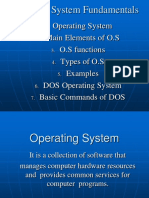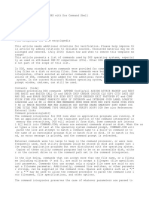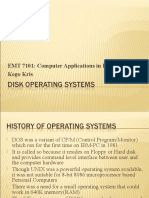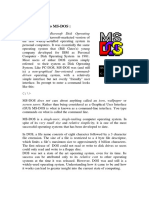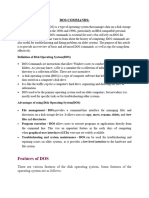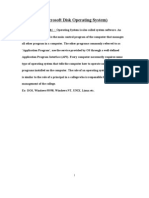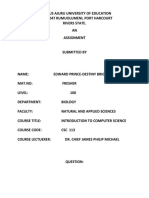0% found this document useful (0 votes)
17 views26 pagesC.F.O.A (Unit 3)
The document provides an overview of computer fundamentals and office automation, focusing on DOS commands and their functionalities, including file and directory manipulation. It discusses various types of operating systems, such as batch systems, multiprogramming systems, and real-time operating systems, along with their characteristics and advantages. Additionally, it highlights the importance of batch files and common services provided by operating systems.
Uploaded by
np050126Copyright
© © All Rights Reserved
We take content rights seriously. If you suspect this is your content, claim it here.
Available Formats
Download as PDF or read online on Scribd
0% found this document useful (0 votes)
17 views26 pagesC.F.O.A (Unit 3)
The document provides an overview of computer fundamentals and office automation, focusing on DOS commands and their functionalities, including file and directory manipulation. It discusses various types of operating systems, such as batch systems, multiprogramming systems, and real-time operating systems, along with their characteristics and advantages. Additionally, it highlights the importance of batch files and common services provided by operating systems.
Uploaded by
np050126Copyright
© © All Rights Reserved
We take content rights seriously. If you suspect this is your content, claim it here.
Available Formats
Download as PDF or read online on Scribd
/ 26








